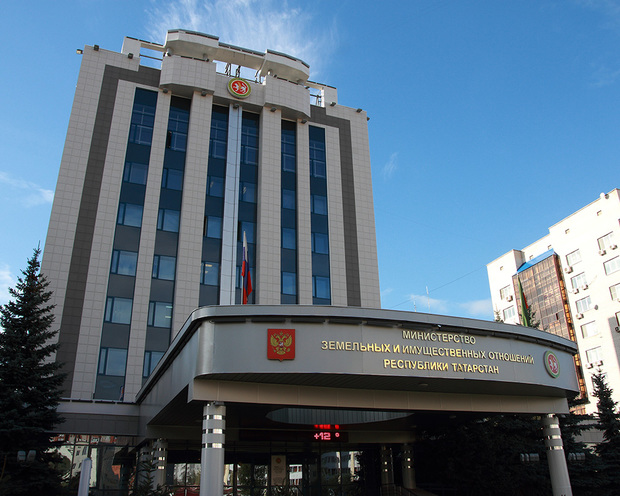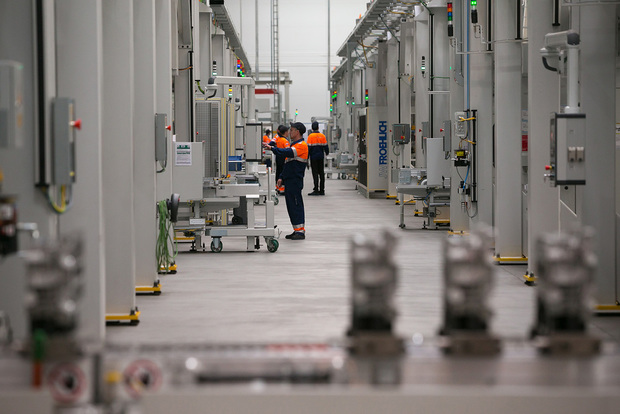Cream for residents only: Alabuga at 400m ‘paper’ losses
Tatarstan decided not to take part in the additional emission of the ‘investment window’
Alabuga Special Economic Zone reported on its financial results for 2015. Despite a 40% growth of the revenue, the SEZ demonstrated losses. A reviewer of Realnoe Vremya looked into the nuances of the financial report.
Losses again?
Alabuga Special Economic Zone Joint-Stock Company (Alabuga SEZ further on) published its financial report for 2015, where it demonstrated its net loss equal to 391m rubles. In 2014, losses made up 370,4m rubles. There was a loss in 2015 in spite of a 40% growth of the revenue, compared with 2014. The growth of its revenue was connected with the increase of the number of residents of SEZ and investments: six new factories opened and 153bn rubles were invested in 2015.
The cost of sales also increased by 40%. All in all the loss in 2014 was reproduced in 2015 in almost the same volumes.
Undoubtedly, it could be said about the influence of a big amortization on such negative indicators. But the cash flow statement for 2015 demonstrates that net cash flow from the main activity was negative (minus 151m rubles) in comparison with 2014, when it was positive – 86m rubles. A sharp growth of salaries in 2015 (it increased by 134m rubles or, more precisely, became 1,5 times higher compared with 2014) is a significant reason for it. It is good enough for an average staff number equal to 543 people: 61,000 rubles per month, which is two times more than an average salary in the republic.
The very press service of Alabuga SEZ commented the information about losses especially for Realnoe Vremya the following way:
'As for the losses reflected in the financial statement, they are connected with the big amortization sums of fixed assets, as it was mentioned above. It should be reminded that the government invested 25,7bn rubles in the creation of the infrastructure of the SEZ, and 24,7bn rubles of them were spent. A gradual debit of these fixed assets is executed according to the Russian standards of the financial statement and tax reporting, the sum that was written off is seen as amortization – in 2015, it made up 909m rubles. Alabuga SEZ illustrated a positive financial result without this 'paper' loss.

The main costs of the trust company are linked with the energy resource delivery to the residents. The tariffs on delivery are approved by the State Committee of the Republic of Tatarstan on Tariffs. Moreover, grid connection in Alabuga SEZ is free – it is one of the most important advantages of the Special Economic Zone.
The shareholders of Alabuga Special Economic Zone Joint-Stock Company set a task for the management of the company on the development and maintenance of the infrastructure of the Special Economic Zone, the creation of attractive conditions for investors and for the appearance of new factories. Due to these specifics of the work of the trust company, its effectiveness is estimated, first of all, judging by the volume of the investments borrowed, residents' taxes paid and the number of working places created, not a direct financial result of the Joint-Stock Company.
At this moment, every ruble invested by the government in the infrastructure of Alabuga SEZ accounts for 4 rubles of private investments provided. The volume of direct tax payments during the period of the existence of SEZ is 12,4bn rubles. What is more, the appearance of new factories led to the development of the business that offers its services to the residents, workers of companies, that's to say, to the growth of the corresponding tax payments that we estimate at not a smaller sum. We suppose that it is the indicator of the 'payback' of the state money invested. From this point of view, Alabuga SEZ is effective.
Does Tatarstan refuse Alabuga?
Effectiveness is effectiveness, but an alarm call was in 2015: Tatarstan refused further co-financing of the costs in Alabuga SEZ. The investments of the government usually were executed by means of the payment of additional fees to the increase of its authorized capital of Alabuga SEZ. In 2015, it was planned to increase the authorized capital by 3,0bn rubles to 27,5bn rubles. According to the initial variant, it was supposed that the shareholders of Alabuga – the Ministry of Land and Property of the Republic of Tatarstan and Special Economic Zones PJSC (Moscow), which hold 38 and 62% of shares (by the beginning of 2015) – will purchase the additional emission in the form of common shares. It means that Tatarstan needed to invest 1,14bn rubles only, which looks like a small amount of money in comparison with massive multibillion injections of bodies controlled by the government of Tatarstan to save Ak Bars JSCB PJSC or sums in the turnover of Svyazinvestneftekhim JSC.

In the end, Special Economic Zones PJSC (Moscow) paid all additional emission equal to 3bn rubles. The report on the results of the additional money creation was registered in the Bank of Russia on 5 November 2015. As a result, the share of Tatarstan in the authorized capital of Alabuga SEZ reduced from 38% to 34%.
The press service of Alabuga SEZ explained the fate of the money of the additional emission: 'The money of the additional emission of shares, as it had been said earlier, are expended on further development of the infrastructure of Alabuga SEZ. So, it is planned to carry out projecting works in the industrial water line, fire department and so-called 'Northern way' of the railway.
Their construction is executed by means of the funds received from the latest today's additional emission. It will allow to increase the investment attractiveness of Alabuga SEZ. We consider that it is necessary to stress that investing the infrastructure of SEZ is effective. Our shareholders' opinion is analogous – this is why they expend money on new construction'. It seems that something is rotten in the 'state of Denmark' because Tatarstan started to get away from further investment in Alabuga SEZ and passed the buck to the federal bodies. Moscow, in turn, is trying to devolve all responsibilities connected with the management of special economic zones on regions. If responsibilities devolve, responsibilities for financing are to be delegated too.
It benefits nobody, first of all, the region
So, what happened? Why are the 'parents' trying to get rid of their 'child' they were proud of and held up as an example? It is possibly connected with the fact that the existence of this 'domestic offshore' does not bring a big benefit for neither the republic nor the country nor even the people working in the factories of Alabuga SEZ. And gigantic investments of the government (which exceeded 25bn rubles) are not the terminus. It is necessary to invest more and more. It is clear that there are tax concessions – the companies are free of land value tax, wealth tax and vehicle tax for 10 years. Must there be significant raises in other places, different from the pockets of the founders of the residents of Alabuga SEZ?

For example, the economy of Yelabuga District.
Let's see the volume of the added value per capita. In Yelabuga District, it accounted for 96% from the average indicator in the republic in 2010, 97% in 2014 and 103% in 2015. It might seem that the injections are huge and the population is quite small (85,162 people or 2,2% of the population of the republic), the growth rates of the economic indicators per capita should grow faster manyfold than average indicators in the republic, but actually, the margin is small. Everything is close to the average level.
Added value per capita, thousand rubles
2014 | 2015 | absolute change | relative change | |
Average in Tatarstan | 159,66 | 180,79 | 21,13 | 13% |
Yelabuga District | 155,49 | 186,18 | 30,69 | 20% |
% of district from average | 97% | 103% |
As for the taxes paid to the local municipality, the indicators are even lower than the average figure. In other words, the district won't get anything – workers and residents' tax and others payments in the SEZ are not game-changing in the district.
Tax and non-tax revenue per capita, rubles
2014 | 2015 | absolute change | relative change | |
Average indicator in Tatarstan | 9,426 | 10,094 | 668 | 7% |
Yelabuga District | 10,182 | 10,584 | 402 | 4% |
% of district from average | 108% | 105% |
It is clear that the residents have privileges, and there are not many workers, they number about 4,200 people. It seems that low salaries are the reason. Complaints about salaries are flying in local social networks. Must there be any palpable for the economy of the district development? What are all these vain attempts for? Are they designed to enrich the residents of the SEZ? Where are the people and where is the district? What is all this fuss for?